Maanit Rabinovich
Upon visiting Maanit Rabinovich’s hometown of Kida, you will be greeted by the famous rugged hills of Samaria. Maanit and her family were the very first settlers who founded this town. They took the raw elements they were presented with, and transformed them into the beautiful, growing town we see today. The rugged, uneven landscape surrounding Kida correlates perfectly to Maanit’s unique art form – she takes rugged, uneven, broken pieces of glass and transforms them into smooth, colorful pieces of glass art. Maanit truly has a gift for taking raw elements and transforming them into shiny, polished, beautiful art.
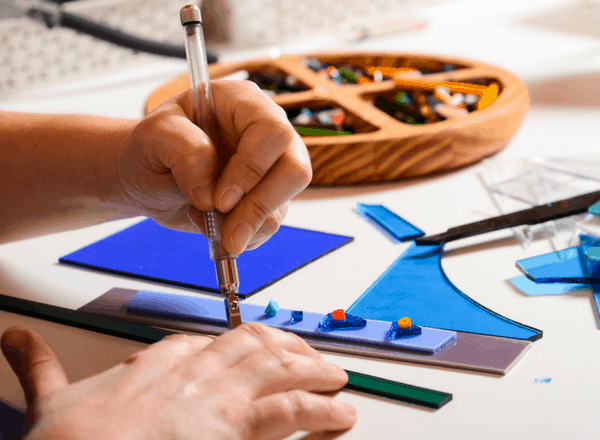 Maanit working in her studio
Maanit working in her studio
Maanit’s journey as a glass artist began by accident. Fourteen years ago, she was finishing up university, studying social work and art, intending to pursue a career in art therapy. She had just one class left to complete her degree, when she was pregnant with her second child. The art class she really wanted to take was not available. She considered waiting to take the class when it would open up again the following semester, but she knew she would not have the time or energy after having her second baby. So, she opted to take the only remaining class available, a subject she had avoided throughout her studies: glass art. She took it out of desperation, but was immediately charmed by the glass.
Working with the glass was magical. What is special about glass is that things that don’t look perfect before entering the kiln come out beautiful, shiny, and smooth every time. When you put glass into high heat, you can try to form what you want, but in the end, you need to approach glass with humility and know that it partly creates itself in the heat. Fire or oven, kiln or lampwork, the finished work is always a surprise. Maanit says that the outcome is always even more beautiful than she imagines.
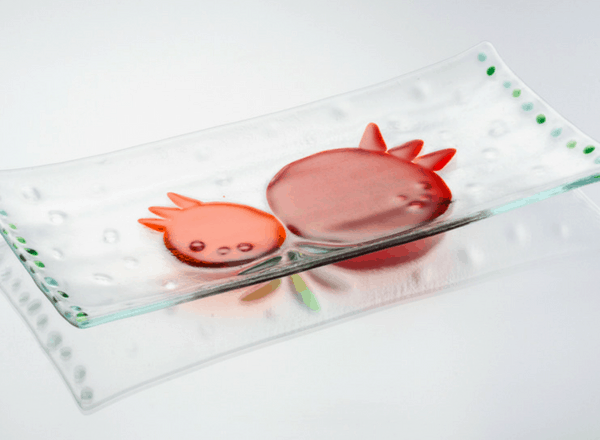 A glass tray with pomegranates – a fruit of Israel very popular for Rosh Hashana
A glass tray with pomegranates – a fruit of Israel very popular for Rosh Hashana
Just over a year after her second baby was born, Maanit gave birth to twins – that’s four kids by age 25. Throughout this period in her life, she was always making art, but she took a professional break. She even bought a small kiln, so that she could practice glass art at home, knowing that she couldn’t travel to Tel Aviv to the studio with four small kids at home. Twelve years ago, two years after first encountering glass art, Maanit packed up some of her artwork and went to sell her pieces at a Jerusalem art festival called Chutzot HaYotzer. This was the first time she sold her work, and she found parting with her art to be very difficult and emotional. She still does, all these years later, and when she sells pieces in person to recurring customers, she tends to remember exactly what they bought in the past because she feels so deeply connect to her art.
Maanit and her family have what is known in Israel as “tzimmers” on their property. Tzimmers are small guest houses, which they rent out to visitors. They share meals and conversations with their guests, showing them what life in Samaria is truly like, opening the floor for religious and political discussions. Maanit admits that sometimes these discussions can get uncomfortable, but sharing the truth about her life and her community, giving outsiders a glimpse of what life is truly like here, is a priority to her. Many members of the international community condemn communities like Maanit’s and she wants to welcome people like them into her home for open dialogue over a cup of coffee and a delicious homemade meal.
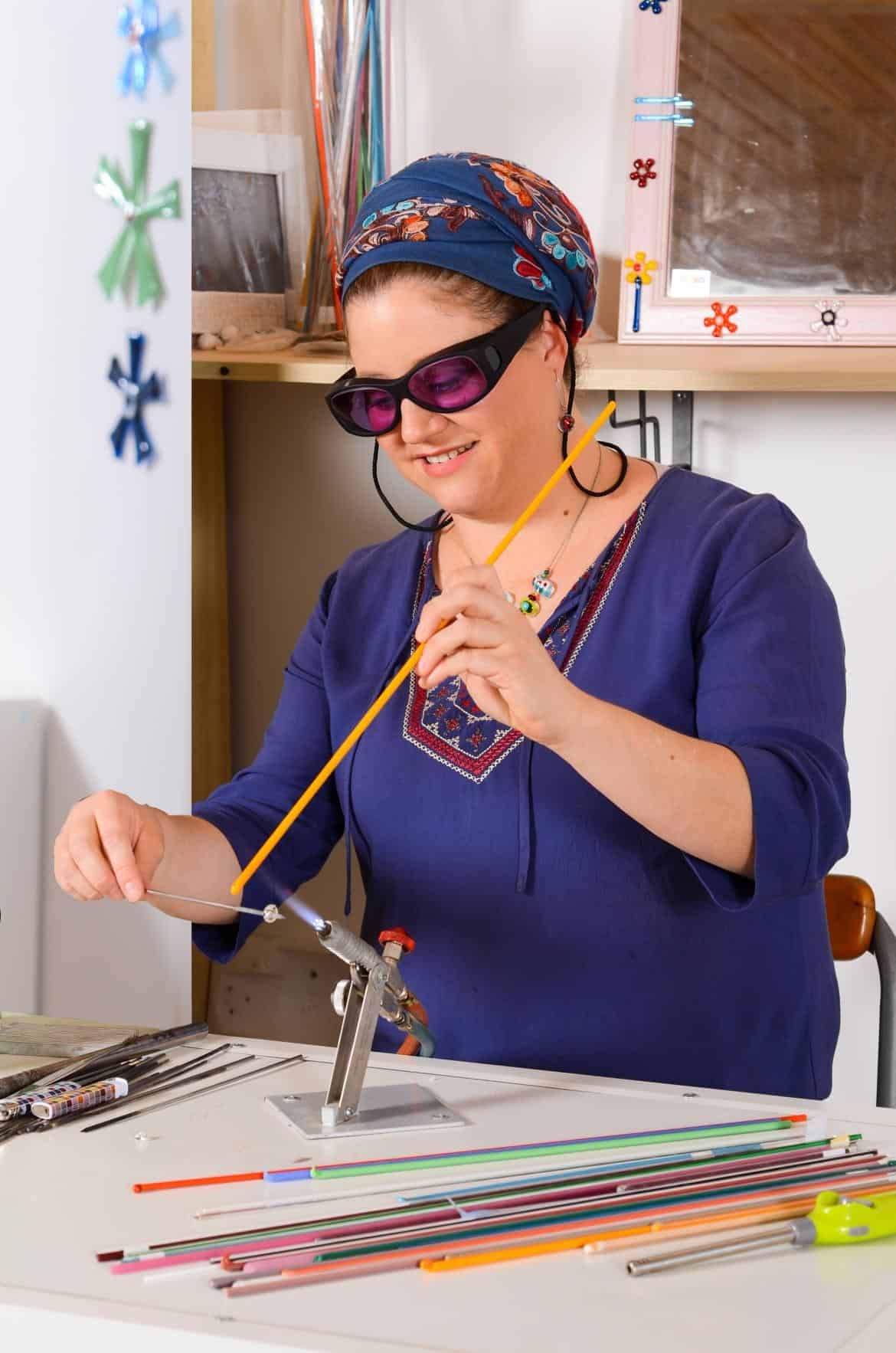 Maanit working in her studio
Maanit working in her studio
Maanit’s guests would ask her and her husband what there was to do in the area. Inspired by this request and for her desire to bring visitors to Samaria, Maanit began offering workshops in her studio. With demand, her studio grew and grew, and she can now give 30-person workshops, and she added a small “coffee corner” and art gallery. She also gives workshops to youth, combining her social work background with her art. She works really hard in her workshops to make sure that everyone brings home something beautiful. Children can participate from age 6 and up, and families come from all over the world. All ages seem to connect to this artform. Even her teenage visitors who are glued to their phones perk up and want to participate when they hear the glass break and the class begin. Maanit works with colorful glass specifically for this use. Most people are afraid of broken glass, but in her workshops, they put their hands into broken glass (with proper safety instructions, of course!).
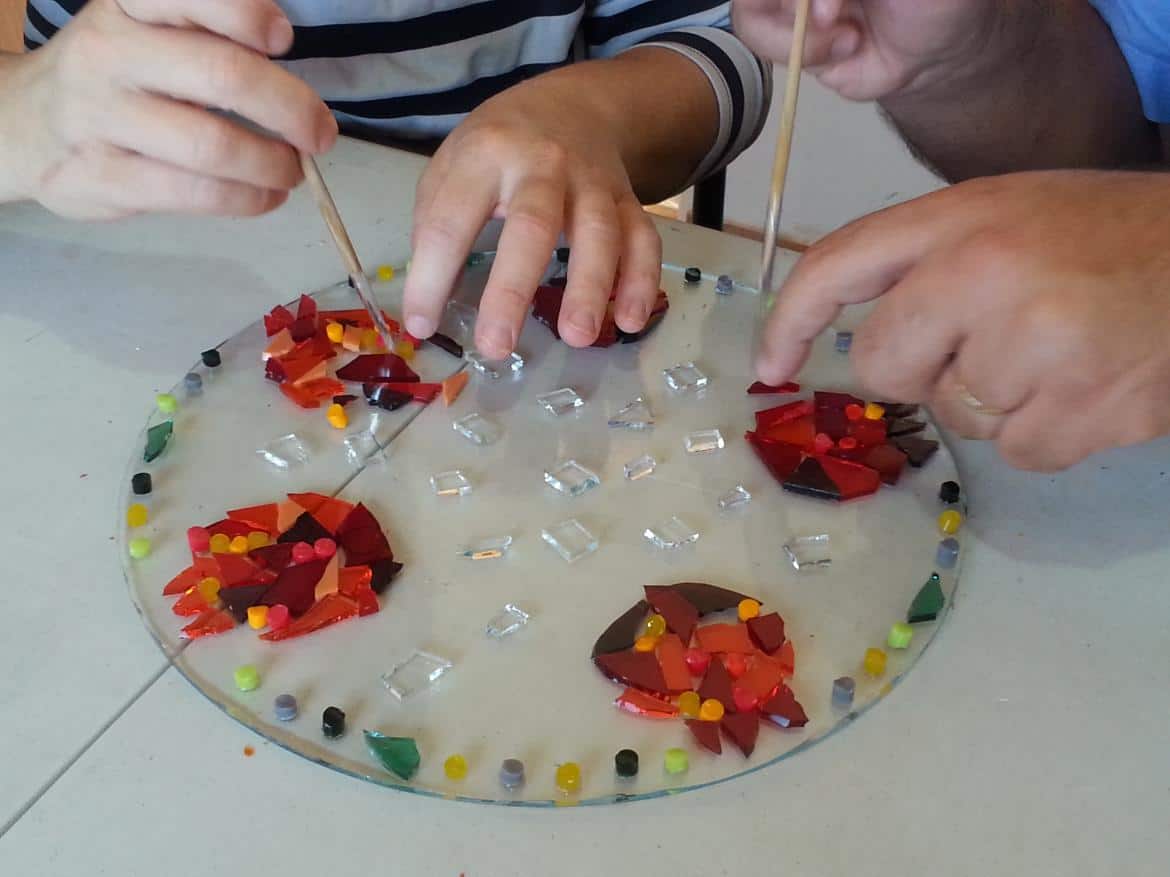 Working on a pomegranate design during a workshop
Working on a pomegranate design during a workshop
Maanit’s work spans from Judaica to jewelry, to custom artwork. Everything she makes is one of a kind – you can’t duplicate with glass, and that is part of its beauty. When people order a custom piece, Maanit really gets to know her customers, understanding exactly what it is that they want. Her goal is to bring peoples’ dreams to light. Everything she creates has a meaning and purpose; she never designs just for the sake of it.
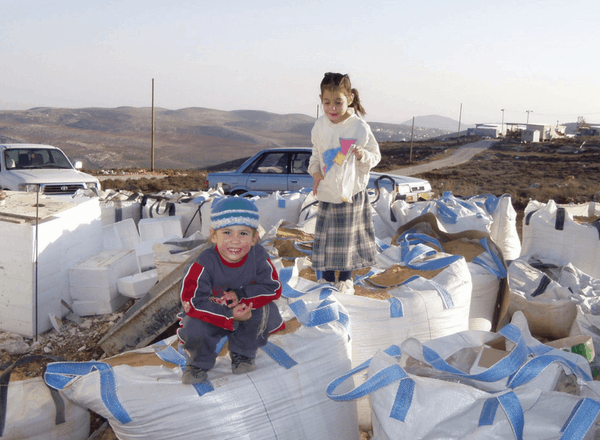 Maanit’s children during the building of Kida
Maanit’s children during the building of Kida
Maanit and her husband were the first residents of Kida, which is now approximately 70 families and growing. There is truly a feeling of creation, development, and growth in this young settlement. In Kida, they know they are walking on the same hills that our forefathers walked thousands of years ago. Maanit referred to the scenery as “nof Bereshit,” which means “a view from Genesis.” Abraham literally walked these very same hills that Maanit is blessed to live in.
Maanit’s husband also works independently in a creative field – he is a contractor. Nearly one-third of the settlement’s residents also own independent businesses, and therefore do not need to commute out of town for work. Maanit makes sure to hire people from the community in order to boost the economy and keep jobs within their settlement. The goals was to establish a settlement for people to live in and work in, and it they are truly reaching their dream.




